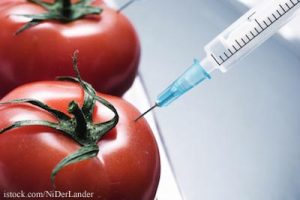The U.S. Government Accountability Office has released a report stating that the USDA needs to enhance its oversight and better understand the effects of unintended mixing of GMO (genetically modified organisms, also known as GE, or genetically engineered) crops with other crops. This has long been a concern of those opposed to genetically modified organisms.
 The report states that the USDA has “not updated its regulations to oversee GE drops derived from alternative technologies in which the GE crop developed contains no plant pest DNA.” While the EPA regulates some GE crops as part of its pesticide regulation process, and the FDA works with companies that develop GE crops to consider food safety issues, USDA’s GE crop regulations only pertain to crops for which the donor, vector, or recipient of genetic material is a plant pest.
The report states that the USDA has “not updated its regulations to oversee GE drops derived from alternative technologies in which the GE crop developed contains no plant pest DNA.” While the EPA regulates some GE crops as part of its pesticide regulation process, and the FDA works with companies that develop GE crops to consider food safety issues, USDA’s GE crop regulations only pertain to crops for which the donor, vector, or recipient of genetic material is a plant pest.
USDA has limited data on the extent and impact of unintended mixing of GE and non-GE crops. Officials say that the agency has not collected information on this topic because “no specific request had been made to obtain this information.”
But several agencies, including Food and Water Watch, have covered this topic and released documents stating that crop mixing is occurring. In 2013 they released a survey showing that five of six responding organic farmers say they are concerned about GMO crop contamination, and one in three have dealt with contamination on their farms. More than half of those farmers have had loads of food rejected because of this contamination.
Back then, Food and Water Watch stated that the USDA Advisory Committee on Biotechnology and 21st Century Agriculture (AC21) had a meeting to establish protocol for coexistence and design a compensation mechanism for farmers who are harmed by cross-contamination from GE crops. The committee “was unable to estimate the costs associated with GMO presence on non-GMO and organic farms due to a lack of data. Their final suggestion for a compensation mechanism was a form of crop insurance that included, in one proposal, a premium to be paid by producers of non-GMO crops,” according to the agency.
Wenonah Hauter, executive director of Food and Water Watch said in a statement back then, “If USDA really wanted to know if contamination was happening, all they had to do was ask organic grain producers who take great pains to keep their crops from being contaminated. Now USDA can no longer claim ignorance about this problem.”
USDA is going to revive AC21, according to the GAO report. In 2014, USDA conducted an Organic survey, in which they surveyed organic farmers on economic losses from unintended GE presence in their crops. That survey, according to USDA, found that “economic losses caused by unintended GE material in organic crops offered for sale exist, although at very small levels.”
GAO is recommending that USDA set a timeline for updating its regulations and include farmers growing identity-preserved crops as well as organic farmers in its survey efforts to better understand the impacts of unintended mixing. They also recommend that USDA should determine what additional information should be sought in future organic surveys. USDA “generally agreed” with these recommendations, according to the GAO.




